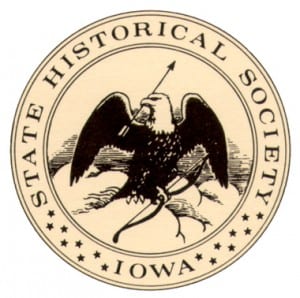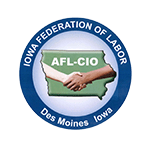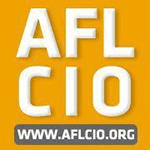State Historical Society of Iowa
Iowa Labor Collection
International Association of Machinists and Aerospace Workers
District Lodge 105. Records, 1942-1992.
****** Look for the ******
“Gallery of Iowa Labor Photos”
Iowa Labor History Timeline
1838 – Iowa Territory established
1846 – Iowa statehood
1852 – International Typographical Union founded
1854 – Iowa Typographical Union founded
1854 – First railroad in Iowa
1860 – Iowa population at 674,913
1861-1865 – CIVIL WAR, Abraham Lincoln, President
1863 – Iowa Brotherhood of Locomotive Engineers established in Eldon, Iowa
1867 – Chicago & North Western railroad becomes first to cross state in east/west direction
1869 – Knights of Labor established
1870 – Iowa population at 1,194,020
1873 – FINANCIAL PANIC in U.S.
1873 – Brotherhood of Locomotive Firemen established in Cedar Rapids, Iowa
1873 – Iowa law says married women have the right to keep their own wages
1877 – Eleven men associated with the “Molly McGuires” are executed in Pennsylvania
1877 – Great Railroad Strikes of 1877
1877 – First major strike in Iowa involves railroad employees in Council Bluffs, Burlington, and Ottumwa
1878 – First local assembly of Knights of Labor in Iowa
1880 – 5,235 miles of railroad track in Iowa (5th in nation)
1880 – John L. Lewis born in Lucas, Iowa
1884 – Bureau of Labor established in the U.S. Dept. of Interior
1885 – Burlington Trades and Labor Assembly
1886 – American Federation of Labor formed
1886 – Haymarket Riot, Chicago
1886 – 8-hour day movement
1886 – Knights of Labor reaches peak membership in 1886-1887
1888 – Great Burlington Railroad Strike
1888 – Union organizing:
United Association (Plumbers & Pipefitters) International Printing Pressmen of North America
Brotherhood of Railroad Trainmen
International Association of Machinists
National Association of Letter Carriers
1890 – United Mineworkers of America founded
1891 – Iowa miners strike for 8-hour day
1892 – Homestead Strike, Pittsburgh
1893 – FINANCIAL PANIC in U.S.
1893 – American Railway Union organized first local in U.S. at Fort Madison, Iowa
1893 – Iowan James R. Sovereign elected head of Knights of Labor
1894 – Pullman Strike/Boycott
1894 – Kelly’s Army
1898 – Miners win 8-hour day
1898 – SPANISH-AMERICAN WAR
1900 – International Ladies Garment Union formed
1902 – Lost Creek coal mine disaster, Mahaska County
1905 – Industrial Workers of the World formed
1906 – Mexican-Americans come to Fort Madison to work on the Sante Fe Railroad
1910 – Iowa population at 2,224,771
1911 – Muscatine button workers strike
1913 – Iowa Worker’s Compensation Law
1913 – U.S. Department of Labor established
1914-1918 – WORLD WAR I
U.S. involved in war April 1917-Nov. 1918
1915 – 10,493 miles of rail in Iowa (4th in U.S.)
1919-1932 – “Open-shop Era”
1929 – Wall Street Crash in October
1929-1940 – GREAT DEPRESSION
1933 – Frances Perkins became Secretary of Labor, the first woman named to the president’s cabinet
1935 – National Labor Relations Act (Wagner Act) protects the right of workers to organize and elect representatives for collective bargaining
1938 – Maytag Strike in Newton
1940-1945 – WORLD WAR II
1941 – Japanese attack Pearl Harbor
1947 – Thousands of Iowa workers demonstrate at state capitol on April 22 to protest anti-labor legislation
1947 – Taft-Hartley Act outlaws closed shop
1949 – Television gaining popularity
1950-1955 – KOREAN WAR
1955 – Merger of the American Federation of Labor and Congress of Industrial Organizations (AFL-CIO)
1960 – Iowa population at 2,757,537
1963 – Equal Pay Act of 1963
1964 – Civil Rights Act passed
1964-1975 – VIETNAM WAR
1965 – Voting Rights Act passed
1972 – Congress passed the Equal Rights Amendment (E.R.A.) and sent it to the states for ratification
1984 – Comparable Worth legislation passed in Iowa
Labor Day: How it Came About & What it Means
(As told by historians at the U.S. Dept. of Labor)
“Labor Day differs in every essential from the other holidays of the year in any country,” said Samuel Gompers, founder and longtime president of the American Federation of Labor. “All other holidays are in a more or less degree connected with conflicts and battles of man’s prowess over man, of strife and discord for greed and power, of glories achieved by one nation over another. Labor Day…is devoted to no man, living or dead, to no sect, race, or nation.”
Labor Day, the first Monday in September, is a creation of the labor movement and is dedicated to the social and economic achievements of American workers. It constitutes a yearly national tribute to the contributions workers have made to the strength, prosperity and well-being of our country.
More than 100 years after the first Labor Day observance, there is still some doubt as to who first proposed the holiday for workers. Some records show that Peter J. McGuire, general secretary of the Brotherhood of Carpenters and Joiners and a co-founder of the American Federation of Labor, was first in suggesting a day to honor those “who from rude nature have delved and carved all the grandeur we behold.” But Peter McGuire’s place in Labor Day history has not gone unchallenged.
Many believe that Matthew Maguire, a machinist, not Peter McGuire, founded the holiday. Recent research seems to support the contention that Matthew Maguire, later the secretary of Local 344 of the International Association of Machinists in Paterson, NJ, proposed the holiday in 1882 while serving as secretary of the Central Labor Union in New York. What is clear is that the Central Labor Union adopted a Labor Day proposal and appointed a committee to plan a demonstration and picnic.
The first Labor Day holiday was celebrated on Tuesday, September 5, 1882, in New York City, in accordance with the plans of the Central Labor Union. The Central Labor Union held its second Labor Day holiday just a year later, on September 5, 1883. In 1884 the first Monday in September was selected as the holiday, as originally proposed, and the Central Labor Union urged similar organizations in other cities to follow the example of New York and celebrate a “workingmen’s holiday” on that date. The idea spread with the growth of labor organizations, and in l885 Labor Day was celebrated in many industrial centers of the country.
Through the years the nation gave increasing emphasis to Labor Day. The first governmental recognition came through municipal ordinances passed during 1885 and 1886. From them developed the movement to secure state legislation. The first state bill was introduced into the New York legislature, but the first to become law was passed by Oregon on February 21, 1887. During the year four more states — Colorado, Massachusetts, New Jersey, and New York — created the Labor Day holiday by legislative enactment. By the end of the decade Connecticut, Nebraska, and Pennsylvania had followed suit. By 1894, 23 other states had adopted the holiday in honor of workers, and on June 28 of that year, Congress passed an act making the first Monday in September of each year a legal holiday in the District of Columbia and the territories.
The form that the observance and celebration of Labor Day should take were outlined in the first proposal of the holiday — a street parade to exhibit to the public “the strength and esprit de corps of the trade and labor organizations” of the community, followed by a festival for the recreation and amusement of the workers and their families. This became the pattern for the celebrations of Labor Day. Speeches by prominent men and women were introduced later, as more emphasis was placed upon the economic and civic significance of the holiday.
Still later, by a resolution of the American Federation of Labor convention of 1909, the Sunday preceding Labor Day was adopted as Labor Sunday and dedicated to the spiritual and educational aspects of the labor movement.
The character of the Labor Day celebration has undergone a change in recent years, especially in large industrial centers where mass displays and huge parades have proved a problem. This change, however, is more a shift in emphasis and medium of expression. Labor Day addresses by leading union officials, industrialists, educators, clerics and government officials are given wide coverage in newspapers, radio and television.
The vital force of labor added materially to the highest standard of living and the greatest production the world has ever known and has brought us closer to the realization of our traditional ideals of economic and political democracy. It is appropriate, therefore, that the nation pay tribute on Labor Day to the creator of so much of the nation’s strength, freedom, and leadership — the American worker.














